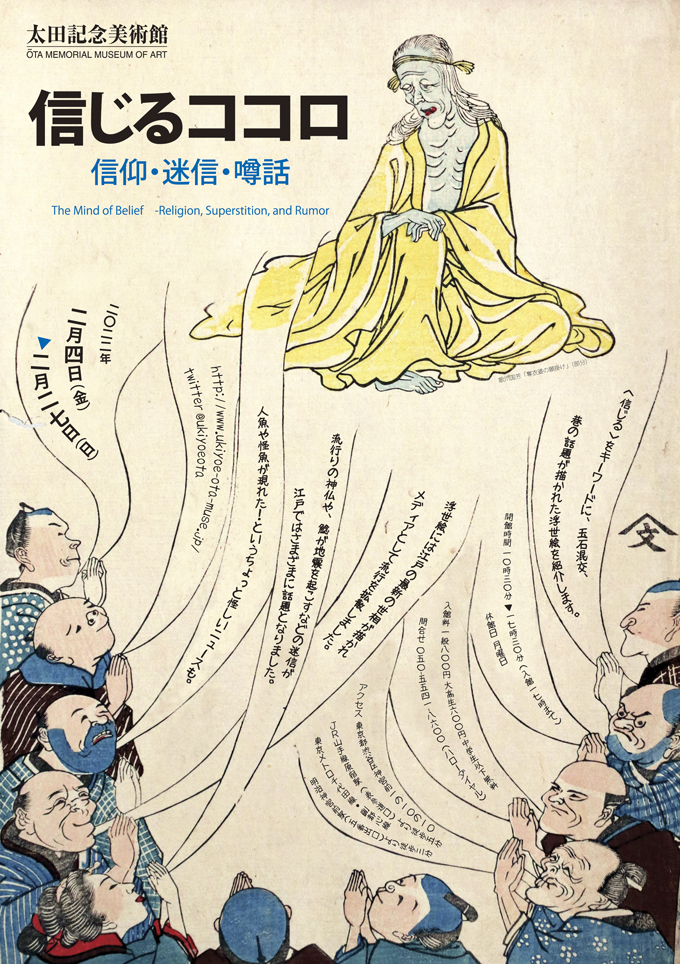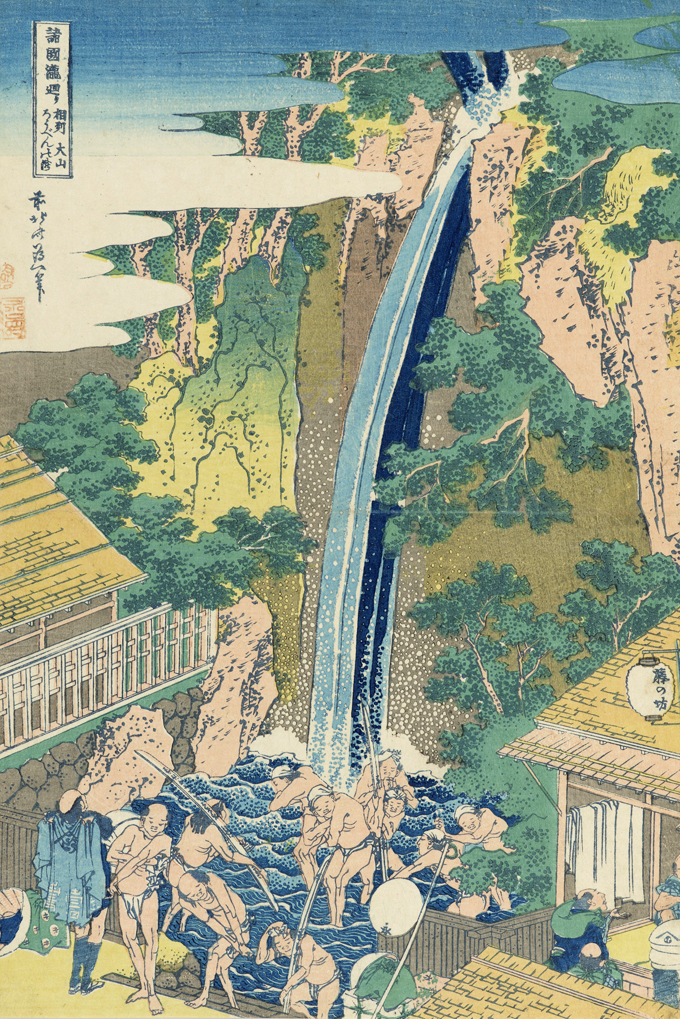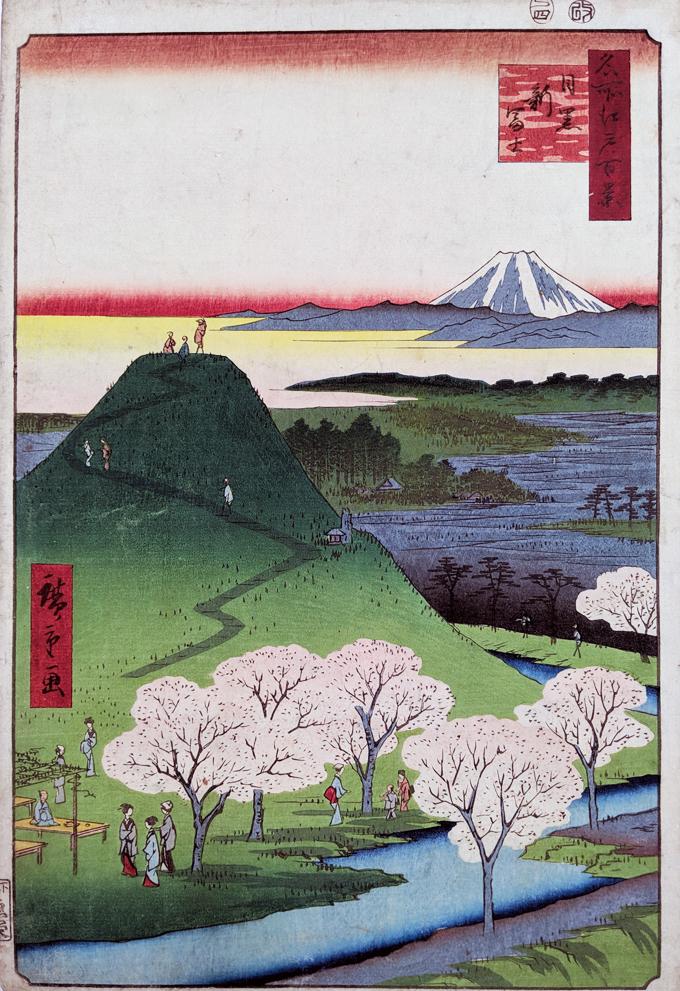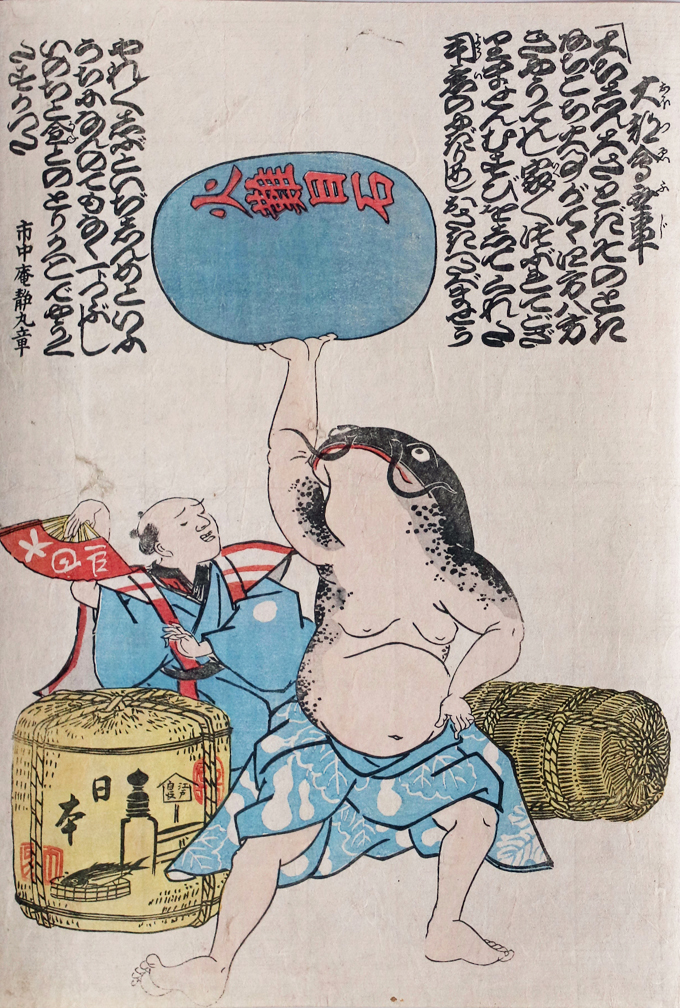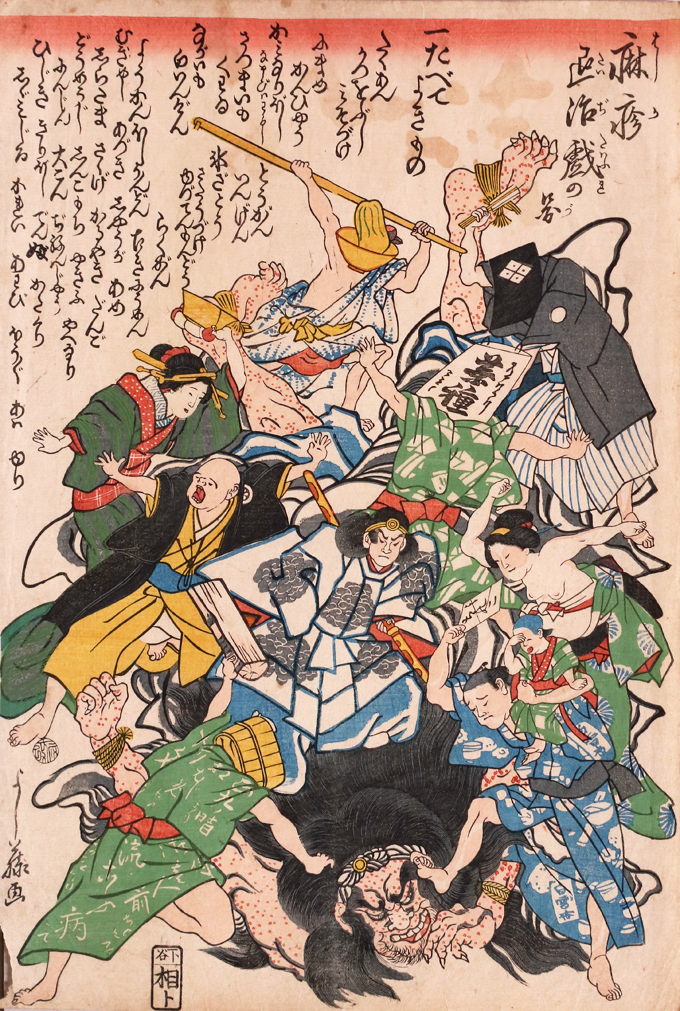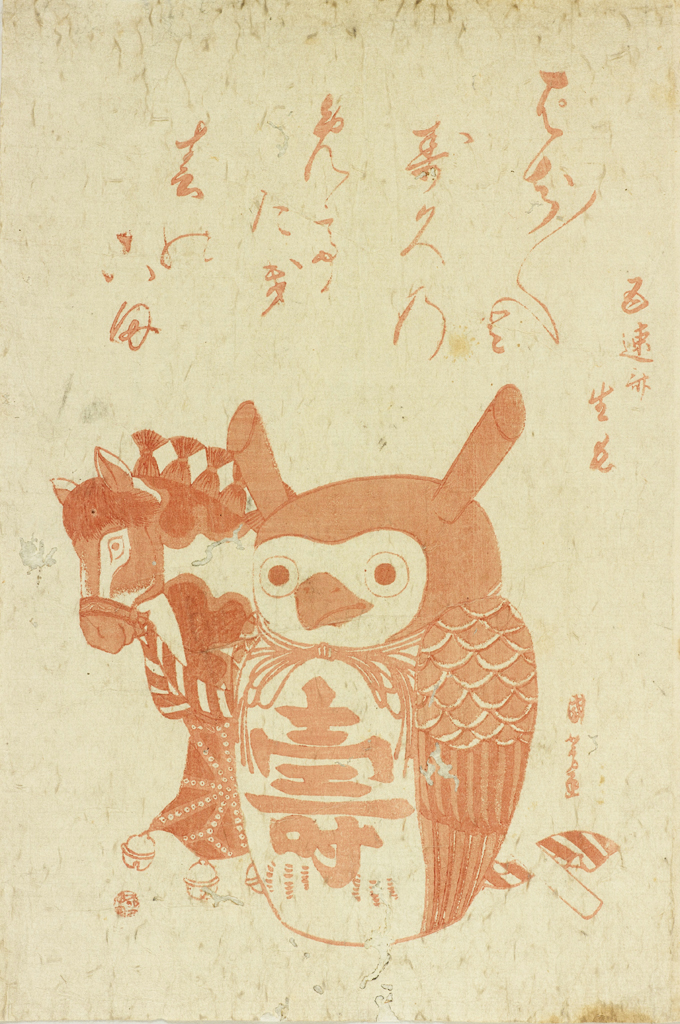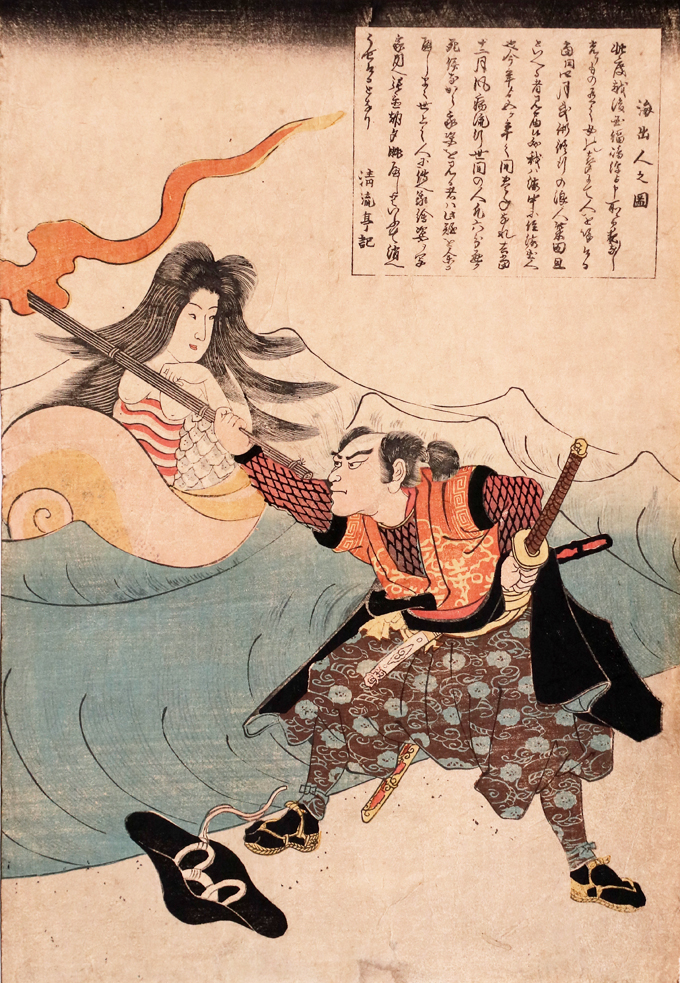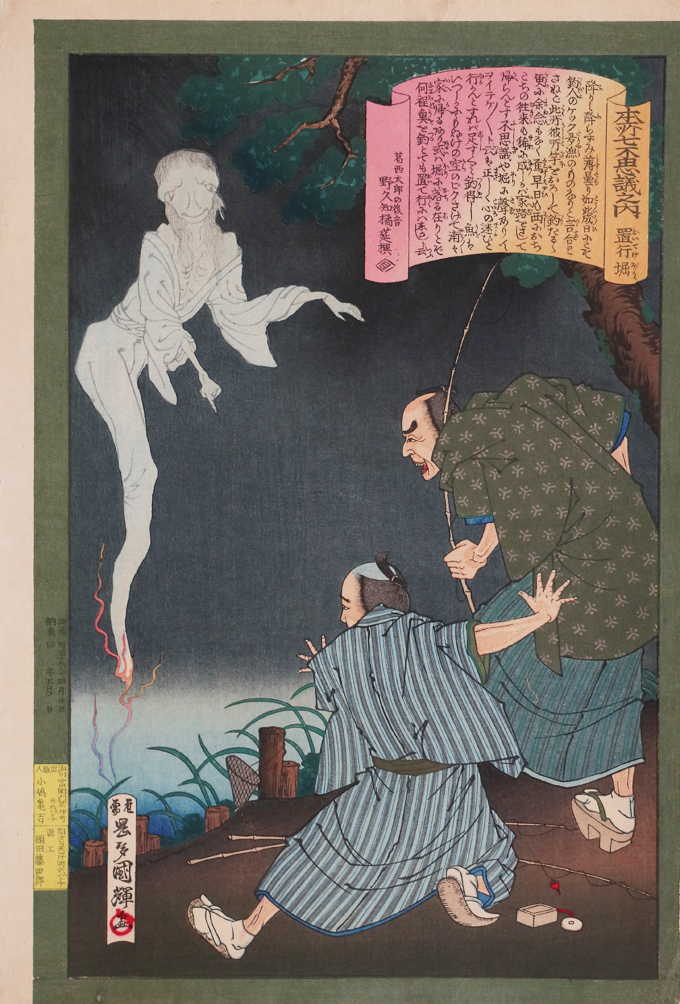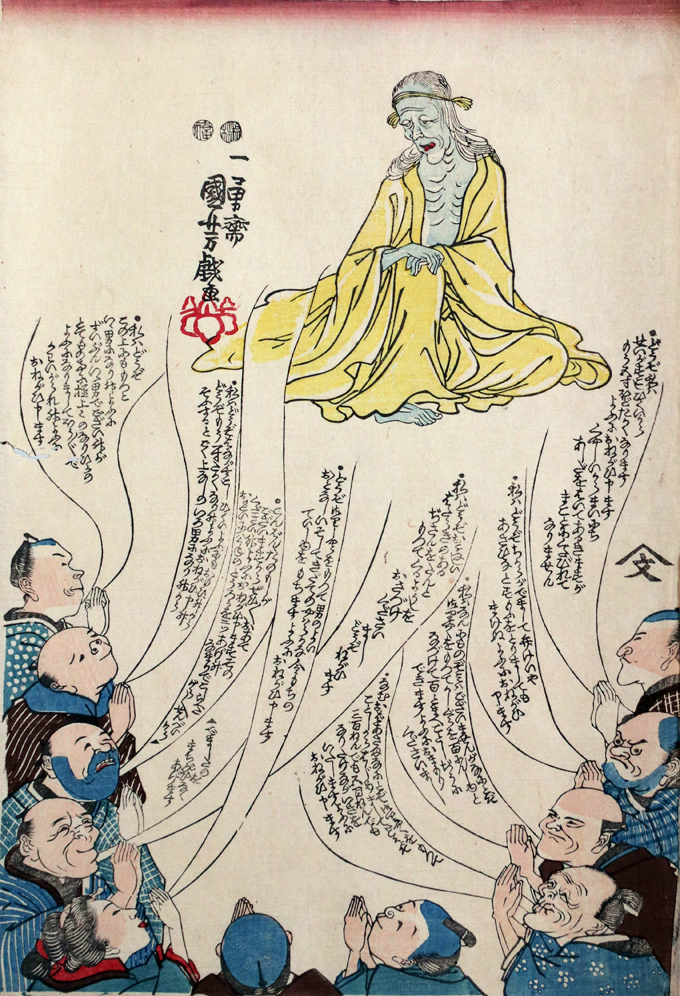The Mind of Belief -Religion, Superstition, and Rumor
A Variety of Ukiyo-e Works with the Keyword “Believe”
During the Edo period (1603-1868), a variety of folk beliefs were popular among the common people. From large temples such as Senso-ji to Inari shrines in the town, many temples and shrines often held fairs and events, which attracted a large number of people. The interest of the common people was not limited to the city of Edo, but also extended to the suburbs, such as Benzaiten in Enoshima and Ōyama-sekison Shrine in the vicinity, and Mt. Fuji and the Ise Shrine in the distance. People went out of Edo not only for worshipping, but also to have fun.
One of the characteristics of the folk beliefs of Edo is that their trends changed rapidly. For example, in 1849, three folk beliefs became a big boom but were fleeting. Ukiyo-e, which depicted the latest world affairs of the time, played the role of spreading these trends to people like SNS today. We will introduce a variety of ukiyo-e works with the keyword “believe”, including “namazu-e (catfish pictures)” which are based on the superstition that catfish cause earthquakes, and works depicting the rather suspicious news of mermaids.

Making a Buzz with Ukiyo-e! Fashionable Deities
One example that symbolizes the changeable beliefs of the people of Edo is the phenomenon of faddish deities. In particular, Otake-nyorai, which was unveiled at Ekō-in Temple in 1849, became very popular. At the same time, other two deities were also popular in Edo, and attracted many pilgrims. At the time, many ukiyo-e artists such as Utagawa Kuniyoshi drew these popular gods in ukiyo-e, and played a role in spreading this trend
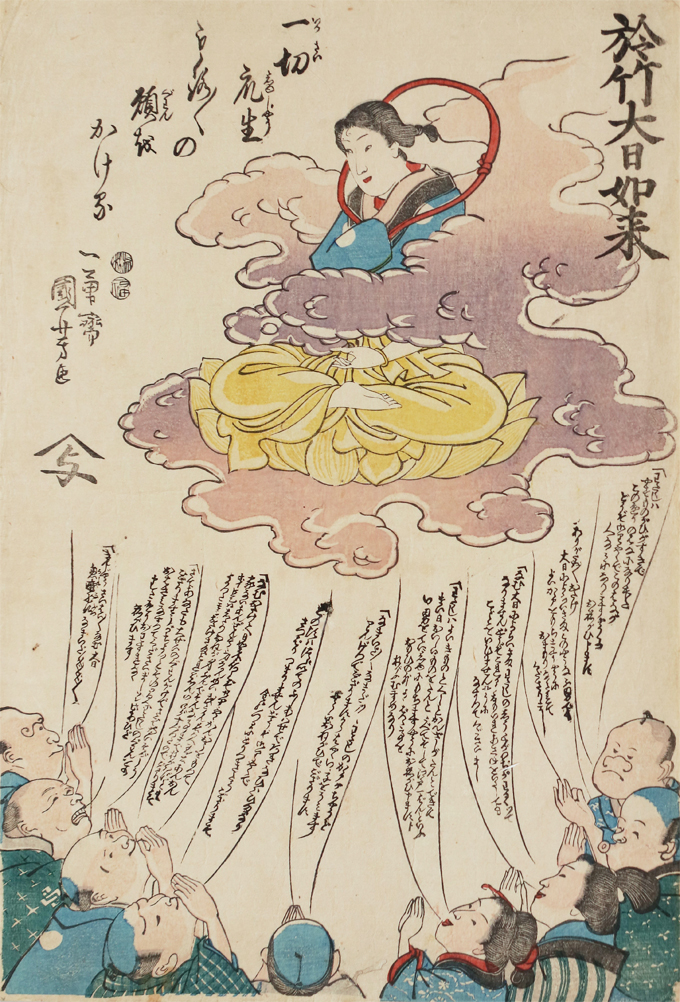
Big Earthquakes, Epidemics and Superstitions –Change Them into Laughter
People in Edo believed in various superstitions in their daily lives, and these superstitions had a close relationship with ukiyo-e. For example, after the Great Ansei Earthquake in 1855, many humorous paintings of catfish, based on the superstition that catfish were the cause of earthquakes, were drawn and became very popular. Not only disasters, but superstitions related to epidemics also became a subject of ukiyo-e. When epidemics such as pox, measles, and cholera broke out, many caricature-style works were published, depicting superstitions related to diseases in a funny style.
A Mermaid Appeared! Doubtful Topics Depicted in Ukiyo-e
In Edo, news that was a little suspicious and doubtful rumors became hot topics, and were often the subjects of ukiyo-e. For example, there is a picture depicting a mysterious mermaid-like woman who appeared out of the sea in Echigo Province. The woman prophesied, “There will be an epidemic in the future, but if you draw a picture of me and put it in your house, you will be safe,” and disappeared. Moreover, we will introduce a series of works depicting the seven famous wonders of Honjo in Edo.
Highlight
Utagawa Kuniyoshi “Making Wishes to Datsueba”
Many people are worshipping an old woman with a slightly troubled look. This old woman was actually a figure of Datsueba, enshrined at Shōjyuin Temple in Naito Shinjuku, which became a popular deity in 1859 along with Otake Nyorai (No.4). Datsueba is a demoness who strips off the clothes of the deceased on the banks of the Sanzu River, which divides this world and the world after death. By the end of the Edo period, she had become a popular object of folk belief. In this picture, many people are making wishes of their own, such as “I want to be taller,” “I want to be stronger,” “I want to marry a nice person,” etc., in order to benefit from the power of the demoness, and she seems to be fed up. The design filled with people’s dialogues is also impressive here.
Admission
| Adult | 800 yen |
| University and High school students | 600 yen |
| Junior High School Students and below | Free |
開館日カレンダー
■closed
休館日
1-3, 7,14,22,28-31
2022 / 3
1-3, 7,14,22,28-31
| SUN | MON | TUE | WED | THU | FRI | SAT |
|---|
